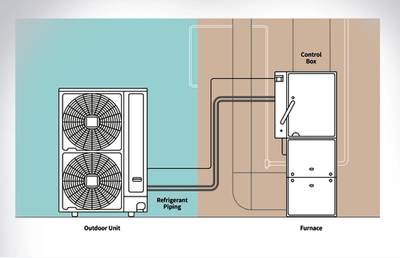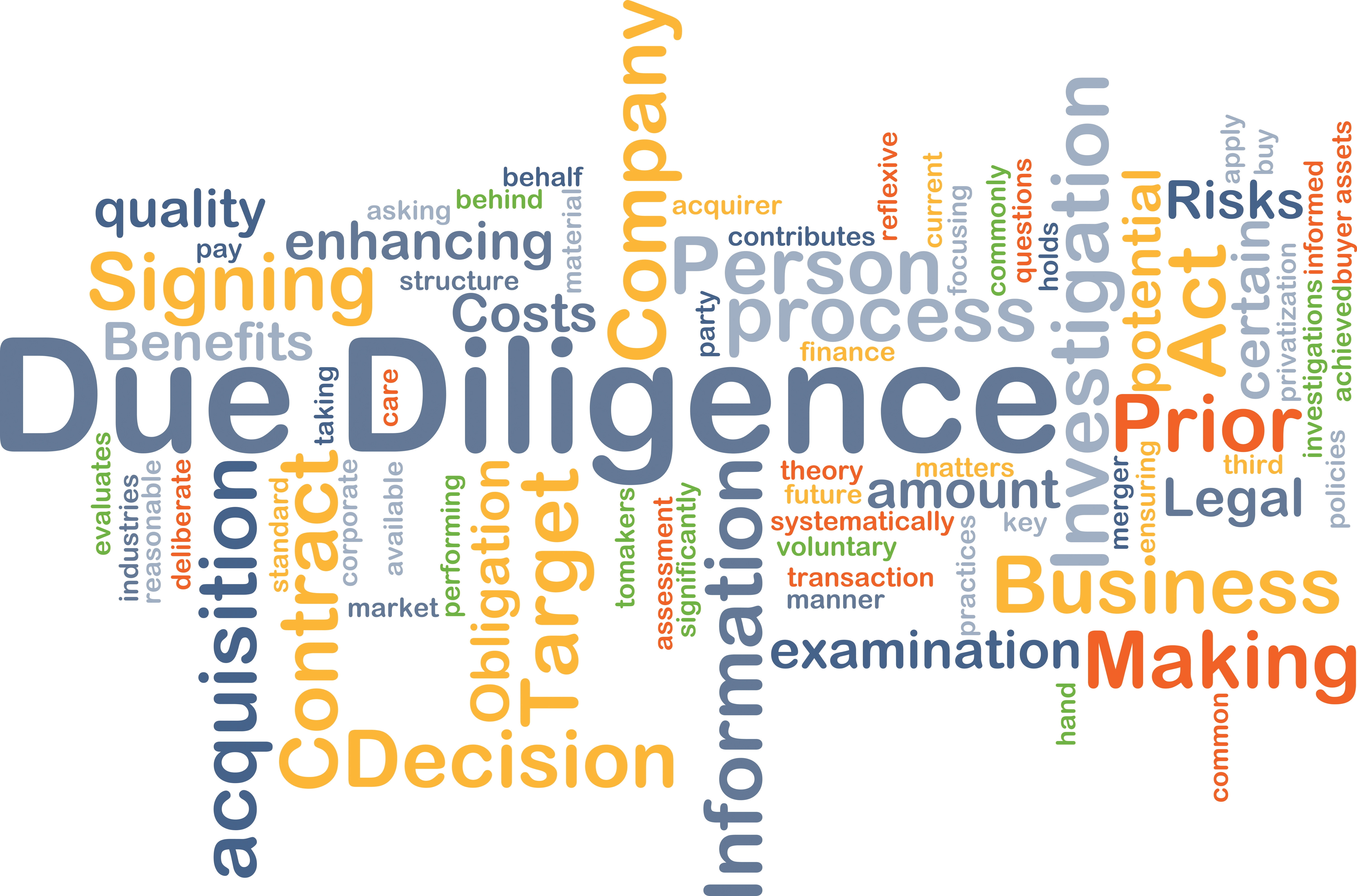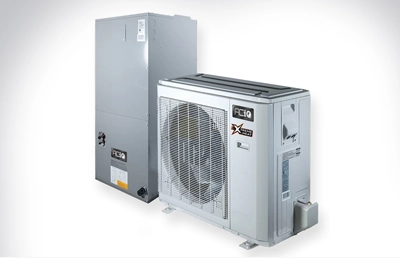Electrification: Of all the decarbonization measures, it’s the one that keeps me up the most at night. Carbon experts tend to agree that electrification of our existing building stock is a critical step toward decarbonizing the built environment. However, the journey is fraught with roadblocks, from strained electrical grids to the paradox of adding grid emissions (operational carbon) while still aiming for overall decarbonization.
Electrifying existing buildings can feel counter-productive for these primary reasons:
Electrical capacity is low
Heat pumps are the likely solution when converting from onsite combustion to electrical equipment, because of their improved coefficient of performance (COP) over typical equipment. This is all great until you realize that no matter how efficient your new heat pumps are, they still require some electricity to operate. This adds to the building's existing electrical demand.
The grid isn’t ready
An overburdened grid results in brownouts, blackouts, and, on really bad days, even wildfires.
The grid is dirty
Every project team should pause and intentionally determine if electrification at this time, on this grid, and in this region is the right thing to do. It may be better to wait until some appropriately extrapolated number of years in the future.
Increased Refrigerants
As we consider greenhouse gases (GHGs), we need to acknowledge that adding heat pumps means we're also adding refrigerant to the building systems (because heat pumps rely on refrigerants). This, again, increases global warming potential (GWP) through GHGs, which both industry organizations and regulatory bodies are also working to reduce or eliminate. Increased refrigerants are especially prominent when the building requires a large amount of heating capacity, such as in a cold climate.
Currently, options for cold climate heat pumps that use low-GWP refrigerants don’t exist for the everyday consumer. The earliest we’re likely to see this cold climate HVAC equipment coming on the market is the end of 2024, per manufacturers’ timelines, and even further down the road for low-GWP HVAC equipment. We now find ourselves in the precarious position of implementation being contingent on manufacturers’ developmental time frames. Given the urgency of our global situation, none of this really feels great.
How to electrify today, tomorrow and into the future
When it comes to electrification, there are three main steps to consider:
1. Assessment
2. Load reduction
3. Implementation
Step 1: Assessment
Begin with these fundamental questions:
• Will this increase the building's peak electrical demand?
• Does the building's current electrical service support added demand?
• Is additional service available from the utility provider?
• Most important: How can we minimize the increased demand resulting from electrification?
Full electrification today may not be possible or beneficial, but by answering these questions, we can begin to lay out a plan for load reduction and implementation.
Step 2: Load reduction (today)
In a world where deferred maintenance is the rule, not the exception, there are always plenty of present-day opportunities to address. Start with the existing envelope conditions and electrical capacity. We use mostly onsite combustion for space heating, which puts the building envelope front and center when it comes to minimizing added electrical demand.
Chances are, there's an opportunity to improve the insulation values and increase tightness of the building envelope. Address current limitations at the electrical service via a utility bill analysis to identify existing peak demand and current available electrical service. Then, if needed, contact the utility provider to determine whether increased electrical service is available.
Step 3: Implementation (tomorrow)
It wouldn't be embodied carbon–friendly to replace heating equipment well before its end of life, so the “today” in Step 2 might not be the right time for equipment replacement. This, combined with the fact that cold climate heat pumps won't be widely available until at least the end of 2024, means that electrification of your heating systems may make the most sense in the range of 2025 to2028. Since you've already reduced loads in Step 2, your building is in a great place for an HVAC upgrade and will still be eligible for the associated Inflation Reduction Act funding.
This is also a great time to install rooftop solar if it wasn't viable in Step 1. In theory, the roof has been replaced recently with the envelope upgrades, so adding solar makes sense from a life cycle standpoint and as a means of offsetting the newly electrified system's energy consumption. Solar is less likely to impact peak electrical demand in a heating-dominated climate, because peak heating demand and peak solar exposure are unlikely to occur simultaneously. In conjunction with the HVAC upgrade, we should also explore incorporating time-of-use controls, peak load sharing, and thermal energy storage.
It's also difficult to make a strong business case for batteries today due to the high upfront cost. However, we hope battery storage continues to progress and becomes a viable technology for the average building owner in the not-too-distant future. Combining onsite renewables with battery backup both increases a building's resilience and continues to reduce the peak demand even further in a way that supports a stable grid as we electrify.
When to implement mindful electrification
Electrification is critical to decarbonizing the built environment because there is no viable renewable energy system for offsetting onsite combustion. As the electrical grid transitions toward renewable energy at the utility scale, electrification will support decarbonization and resilience at the building scale.
Regulatory updates and various utility, municipal and federal incentives are coming online to make near-term electrification feasible. The most recent Title 24 update effectively requires all-electric heating systems up to a moderate capacity, the Inflation Reduction Act has prioritized electrification via many of its available incentives, states are taking refrigerant regulations into their own hands absent a more federal push, and initiatives like the U.S. Department of Energy’s Cold Climate Heat Pump Challenge have been pushed out to the industry to bridge the current technology gap.
New Construction Case Study
Working with ZGF Architects and the city of Boulder, Colorado, our Building Performance Modeling team helped assist in design strategies for a net zero emissions goal. A fully electric building is a huge part of the strategy toward zero emissions. By first starting with thoughtful envelope design and extraordinarily low energy usage, we got the predicted EUI down in the low-20s. This helped reduce the electrical capacity required for both heating and cooling loads. As we embark on phase two, actually designing the project, engineers at BranchPattern are utilizing air-sourced heat pumps to achieve the goal of an all-electric building. To meet additional decarbonization goals, the project will also have ample PV panels, which will generate more electricity than is required, and there will be batteries onsite for energy storage in case of a climate-related disaster.
Existing Building Case Study
WP Carey approached BranchPattern to do an energy audit and electrification study for a 274,000 sq. ft. steel fabrication and distribution center. Most of the building’s square footage, initially constructed in 1964, is used for metal processing and production, an energy-intensive process. During our facility assessment, we reviewed every piece of equipment for the HVAC, hot water, lighting, and building enclosure systems.
We made recommendations for each respective system, along with rough order of magnitude costs and payback information. BranchPattern looked at renewable energy production via onsite roof-mounted PV panels, showcasing the opportunity to cover the monthly electricity consumption with renewable energy. It was essential to first look at energy savings before electrification. The study's final recommendations found a 60 to 80% potential energy savings, the bulk of which were related to the building envelope, which had seen few upgrades over its life. There were a few takeaways from this case study:
• Not all energy-saving measures result in reduced carbon emissions. For example, depending on the location and the supporting utility grid’s emissions factor, electrification may not result in carbon emissions reduction.
• Even where the grid emissions factor does not support direct electrification, prioritizing passive (envelope) and active (building energy users) load reduction first can ultimately support electrification that leads to reduced carbon emissions.
• In cold climates, where roadblocks to full electrification exist for the building’s heating system, consider partial electrification as a viable step along the path to a full transition away from onsite combustion. This could look like heat pumps as the primary heating source with natural gas backup for extremely cold days.
Conclusion
A holistic and integrative approach is our most impactful lever for electrifying existing buildings. Electrification is not a straightforward path, nor is it a fad. Rather, it is a nuanced, exploratory journey through challenges and opportunities that exist now, in the short term and in the near future. The key lies in mindful planning, addressing current limitations and charting a course that aligns with the evolving landscape of decarbonization.
As we traverse this terrain, we must remain mindful of its complexities, adapt our conversations and strategies, and stay optimistic and inquisitive, while keeping our eyes on the ultimate goal of a sustainable, low-carbon, electrified eventuality.
More resources
• Embodied Carbon in U.S. Industrial Real Estate study from BranchPattern
• Emissions and Generation Resource Integrated Database from the U.S. EPA
• Data sets from the National Renewable Energy Laboratory
• Zero-emission building ordinances in the U.S. from the Building Decarbonization Coalition
• Issue brief on beneficial electrification from USGBC's Advocacy and Policy team
For more information please visit www.branchpattern.com
About Kristy Walson
Kristy ia, LEED Fellow and Principal at BranchPattern, is a mechanical engineer by trade who focuses on decarbonization strategy and sustainable design within the built environment. Over the last 15+ years, Kristy has provided decarbonization strategy and sustainability consulting, LEED and other sustainable rating system facilitation, energy modeling and auditing and commissioning on several projects throughout the United States. Contact Kristy at kristy.w@branchpattern.com.





